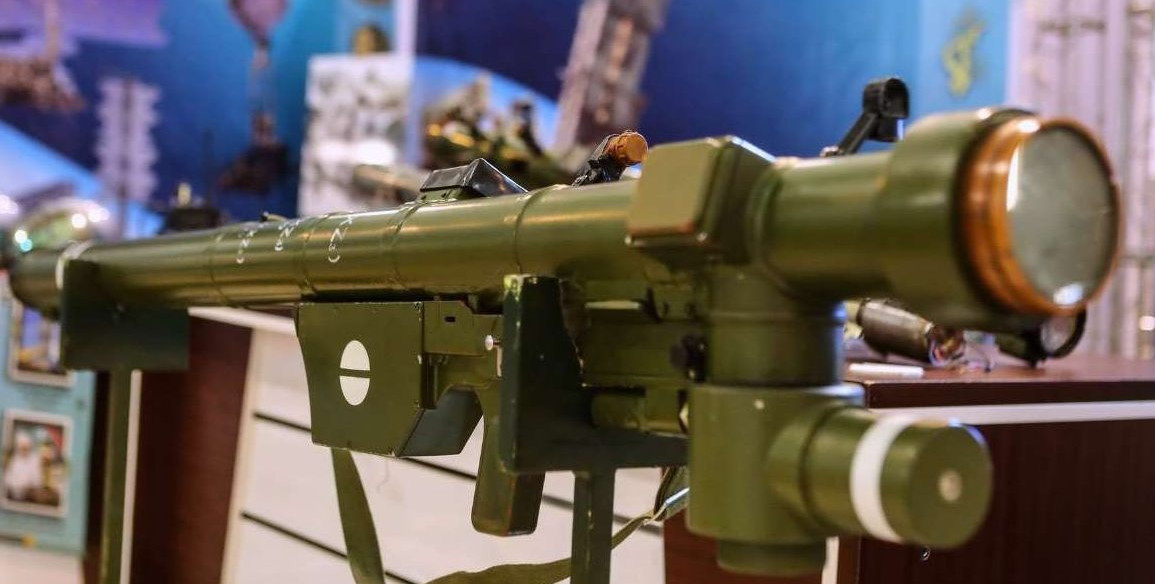Iranian boats reportedly tried and failed to shoot down a U.S. MQ-9 Reaper drone flying, which was monitoring their movement in the Gulf of Oman just hours before attacks on a pair of oil tankers in the same general area two days ago. This comes amid separate reports that Iran has been interfering with the ongoing efforts to recover one of the two tankers, the Front Altair, which had suffered a serious fire in the incident.
CNN was first to report the new details, citing an unnamed U.S. government official, on June 14, 2019. The source described the weapon the Iranian’s employed as a “missile,” but did not specify what type. They added that it had missed the drone and fallen into the ocean. They did not say whether or not the unmanned aircraft had subsequently observed the Iranians conducting any actual attacks on the Front Altair or a second tanker, the Kokuka Courageous.
Given the generally small size of Iran’s various armed speed boats, it seems very likely that the weapon in question was a short-range, heat-seeking, man-portable, shoulder-fired, surface-to-air missile, commonly known as MANPADS, which stands for Man Portable Air Defense System. Iran’s military and quasi-military Islamic Revolutionary Guard Corps (IRGC) both have various types of these weapons in service, including locally produced clones and derivatives of Chinese models.

Depending on the exact model of MANPADS, it’s not clear whether it would be been able to hit a Reaper, which can fly above the engagement envelope of these short-range weapons. But the MQ-9 could well have been flying significantly within the threat range of such weapons in order to get a clearer view of what was happening below. The U.S. military flies other drones in the region that are smaller and less complex, too.
MQ-9s have certainly proven vulnerable to relatively limited air defenses, though. CNN‘s source also offered confirmation that Iranian-backed Houthi rebels in Yemen had shot down a Reaper over or near the Red Sea last week.
Social media accounts linked to the Houthis first began posting pictures of the wreckage of an MQ-9 online on June 7, 2019. At the time of writing, the U.S. government has not publicly acknowledged this loss. In October 2017, U.S. Central Command (CENTCOM) did confirm publicly that the Iranian-supported militants had brought down another Reaper over Yemen. In both of these Yemen shoot downs, it is unclear what type of weapon the Houthis, who have access to a limited number of medium-range surface-to-air missile systems, as well as MANPADS, may have employed.
It’s also not the first time Iranian forces have tried to shoot down U.S. drones flying in the region. In 2012, an Iranian Su-25 Frogfoot ground attack aircraft tried to bring down a U.S. Air Force MQ-1 Predator, leading the service to use manned fighter jets to escort them for a period. This harassment also gave added emphasis to efforts to give these unmanned aircraft their own air-to-air self-defense capability.
But, if true, this latest altercation is still evidence of a significant escalation in tensions between the United States and Iran, which have been growing steadily since the beginning of May 2019. It would also be an indication of the additional evidence the U.S. government has to substantiate its claims that Iran was involved in the attacks on Front Altair and Kokuka Courageous.
CENTCOM has already released pictures of what it says is a likely dud limpet mine attached to the hull of the Kokuka Courageous, as well as a video showing Iranian forces returning to the ship to recover it hours after the attack. Japanese shipping company Kokuka Sangyo, which owns this tanker, has disputed these assertions, saying that it heard from the crew that the ship came under attack by “flying objects.”

There was already the possibility that the attackers might have employed multiple weapons in the attack, either to cause damage or simply to distract from the placement of the limpet mines. Iranian forces firing a MANPADS at an American drone could also help explain the reports from the crew of the Kokuka Courageous.
Separately, another unnamed U.S. official told ABC News that Iranian fast boats had been interfering with contract salvage teams attempting to begin work on recovering the Front Altair. The Iranians have reportedly insisted that they cannot move the tanker, which is international waters.
The Iranians have already taken custody of the Front Altair crew under still suspicious circumstances. Some reports say that Iranian forces threatened the cargo ship Hyundai Dubai, which had rescued sailors initially, if it did not turn them over. Other reports just say that the Hyundai Dubai‘s captain felt he had no choice but to comply with the Iranian requests to transfer the crew, but do not specifically mention that he was threatened.
Whatever the case, the sailors are now in Iran and it is unclear if they are free to go. Shipping company Frontline, which owns the Front Altair, has indicated that the Iranians plan to repatriate them, but there is no indication yet of when this might occur and under what conditions.
The U.S. Navy’s Arleigh Burke-class destroyers USS Bainbridge and USS Mason
reportedly remain close to the area where Kokuka Courageous was attacked, possibly to prevent the Iranians from interfering with the recovery efforts there. That ship is already under tow and headed toward a port in the United Arab Emirates.
The United States, along with the United Kingdom, has blamed Iran for the attacks on the tankers. The U.S. government says it is focused on sharing the information it has in order to build a “global consensus” about Iran’s culpability.
Though Iran continues to deny any involvement in the attacks, the amount of contradicting evidence only seems to be growing by the day. If this latest report proves accurate, it would add substantial weight to the case against them.
Contact the author: joe@thedrive.com
